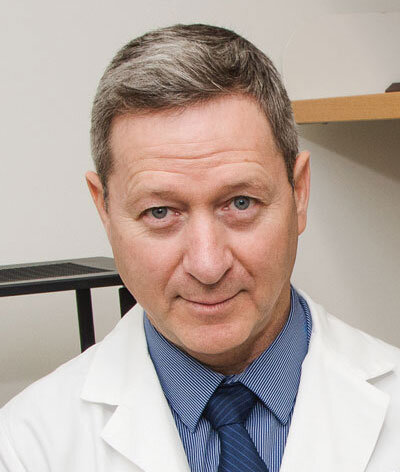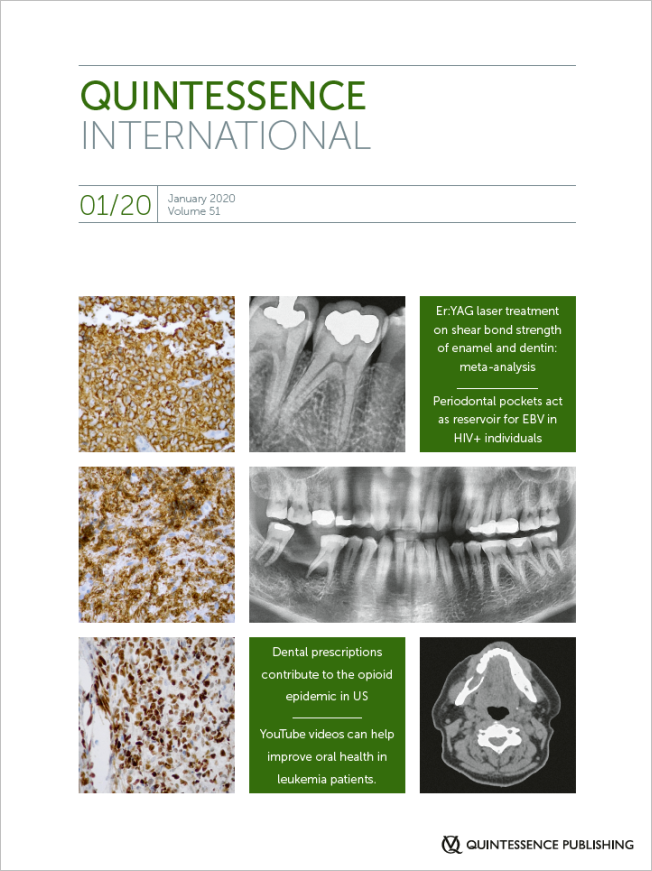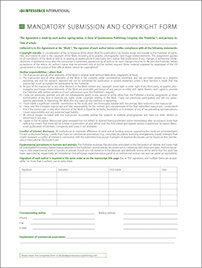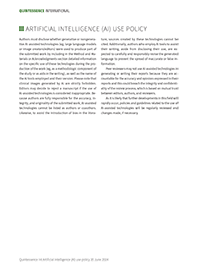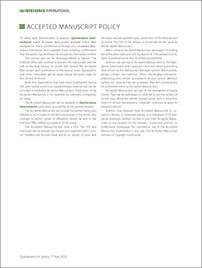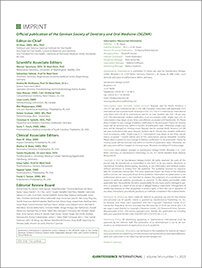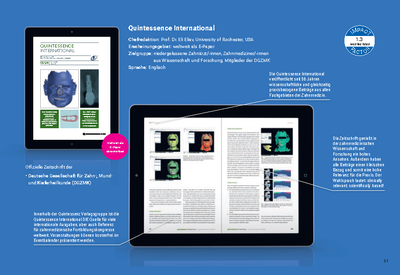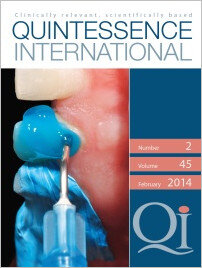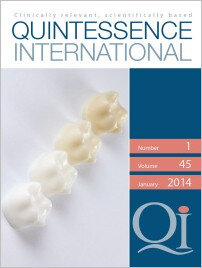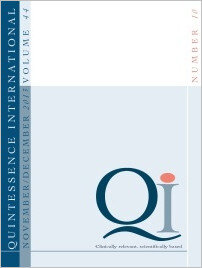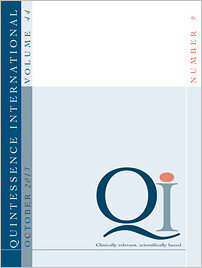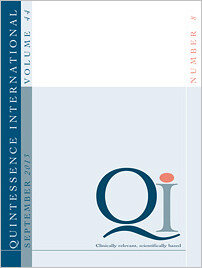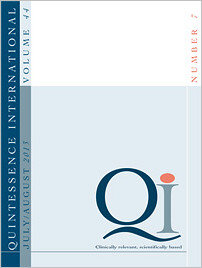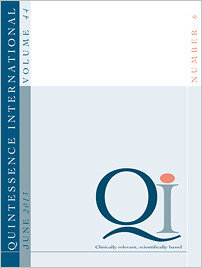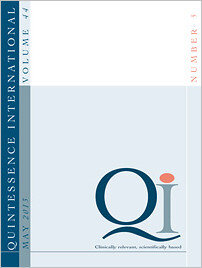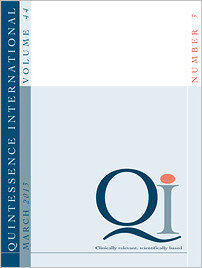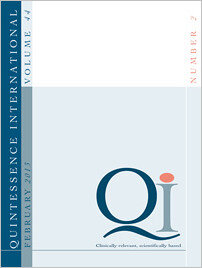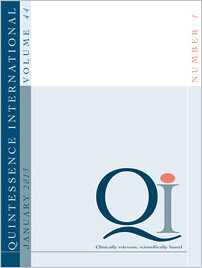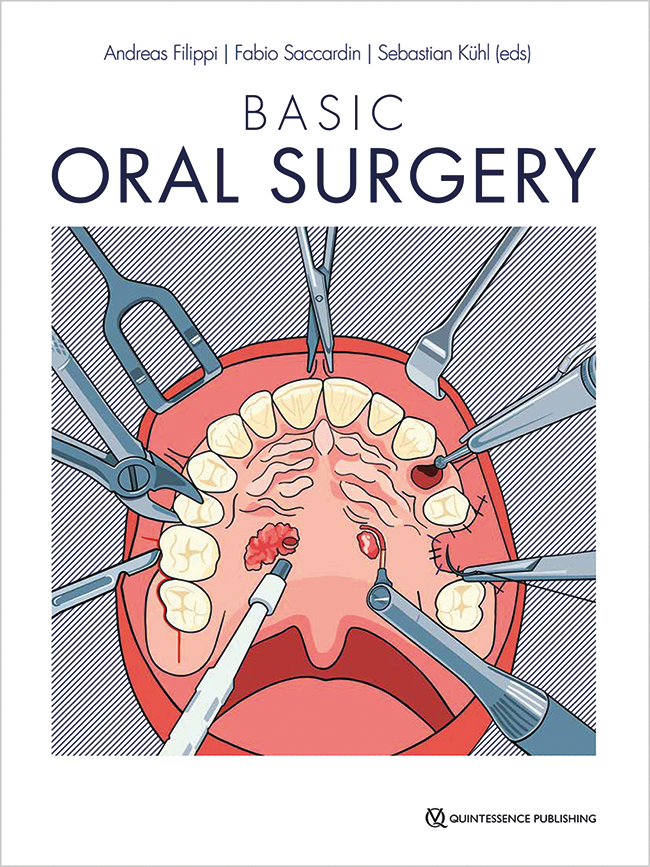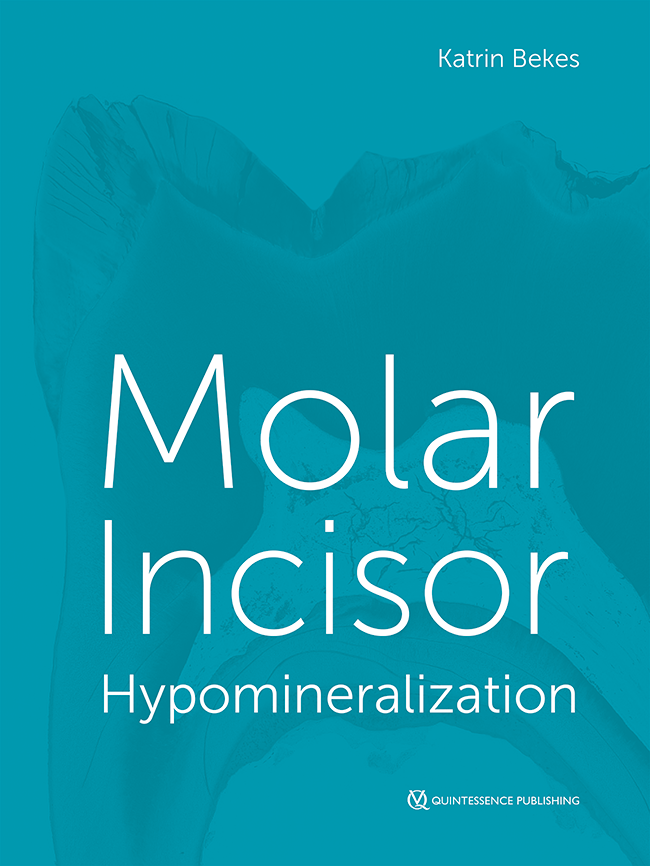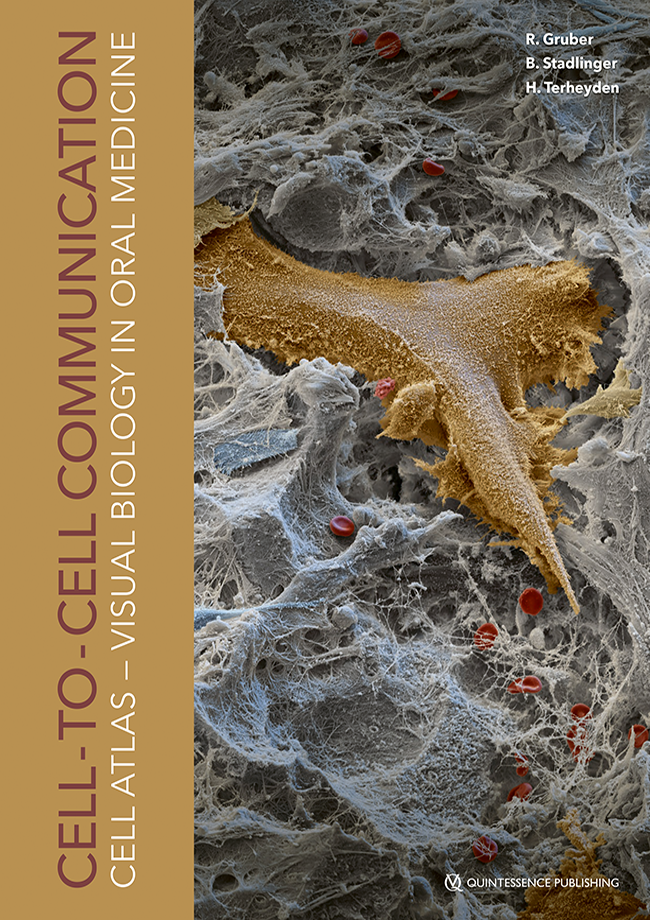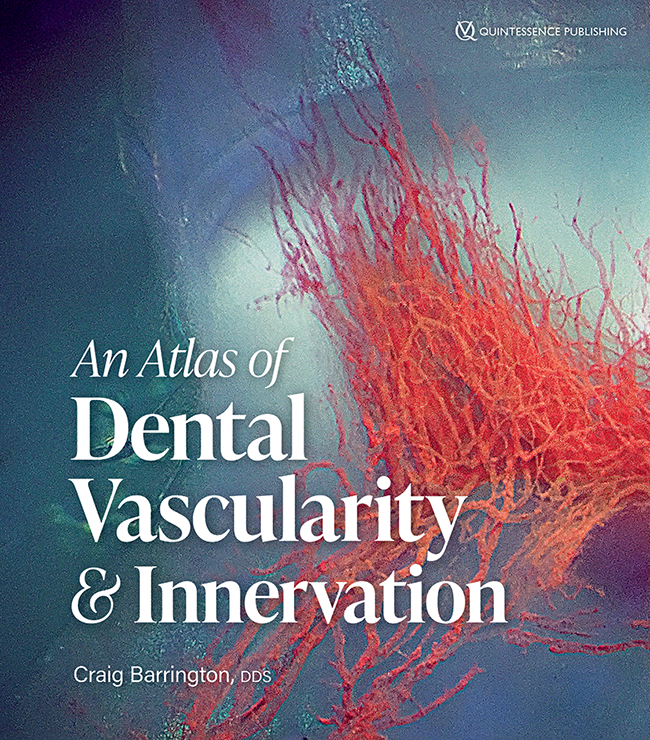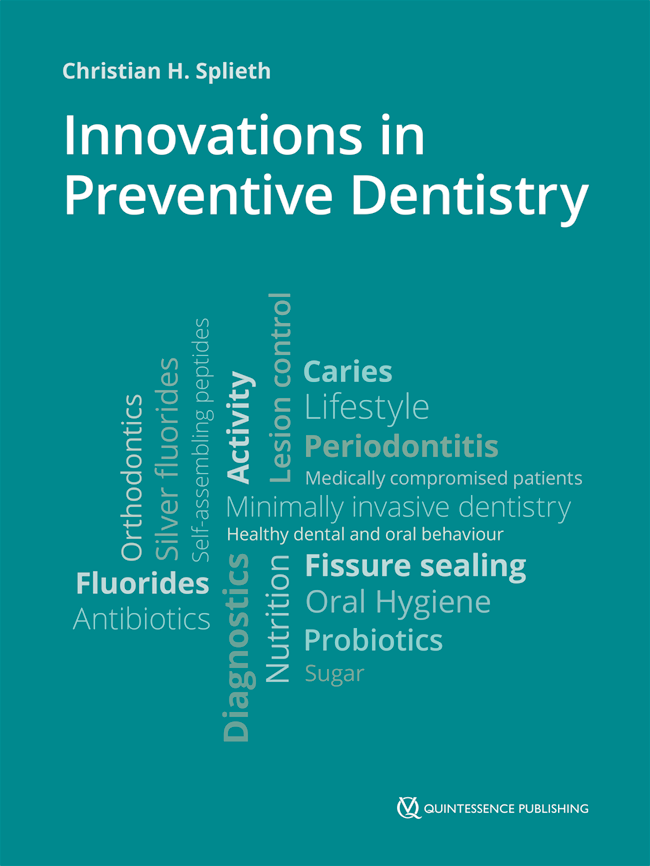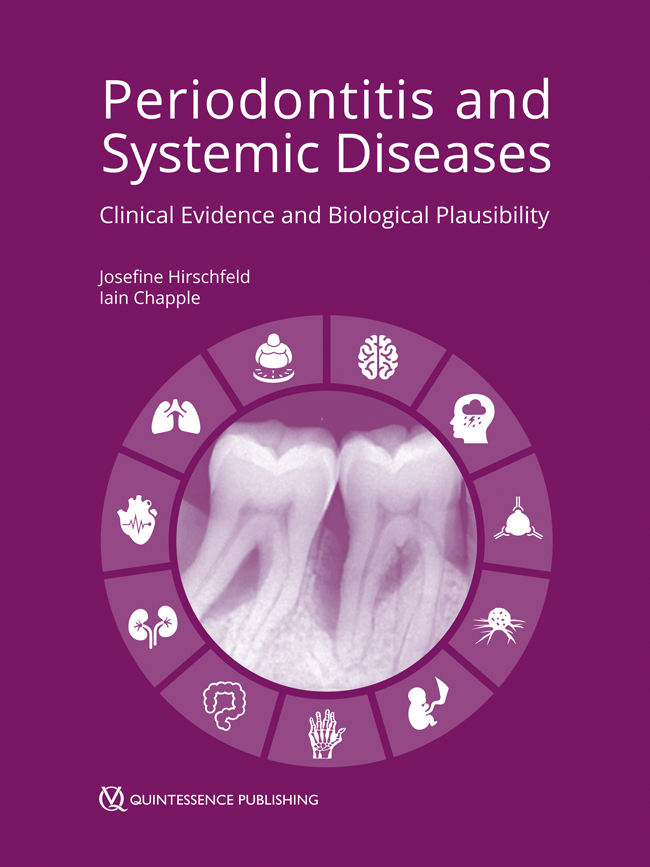DOI: 10.3290/j.qi.a31106, PubMed ID (PMID): 24389560Pages 97, Language: EnglishBenoliel, RafaelDOI: 10.3290/j.qi.a30998, PubMed ID (PMID): 24389561Pages 101-108, Language: EnglishMcRay, Blake / Cox, Timothy C. / Cohenca, Nestor / Johnson, James D. / Paranjpe, AvinaObjective: Since the development of nickel titanium (NiTi) rotary files a number of file systems have been developed, including ProTaper continuous rotary files and the recently developed WaveOne reciprocating files. Previous studies have demonstrated better fatigue resistance of the WaveOne file compared to the ProTaper file. However, no study has compared the effects of reciprocation and continuous rotary motion on transportation and centering ability. Hence, the aim of this study was to compare the two file systems in their transportation and centering ability in mesial roots of mandibular molars using microCT imaging.
Method and Materials: Twenty seven extracted mandibular molars with mesiobuccal and mesiolingual canals with separate foramina were used. Pre-instrumentation scans of all teeth were taken, canal curvatures were calculated, and the teeth were randomly divided into two groups. In group 1, the mesiobuccal canals were instrumented with ProTaper files and the mesiolingual canals with WaveOne files. In group 2, the mesiobuccal canals were instrumented with WaveOne files and the mesiolingual canals with ProTaper files. Post-instrumentation scans were performed and the two scans were compared to determine centering ability and transportation at 1, 3, 5, and 7 mm from the apical foramen.
Results: Although the WaveOne appeared to stay slightly more centered at the 1, 3, and 5 mm levels and ProTaper showed less transportation at the 1 and 3 mm levels, these differences were not statistically significant.
Conclusion: Overall, this study does not support the use of one file system over the other (ProTaper or WaveOne) when comparing transportation and centering ability. Both file systems proved safe for endodontic instrumentation.
Keywords: centering ability, microCT, ProTaper, transportation, WaveOne
DOI: 10.3290/j.qi.a31010, PubMed ID (PMID): 24389562Pages 109-113, Language: EnglishLv, Zhe / Yao, Hua / Zhuang, GenyingCases of idiopathic gingival enlargement are so infrequent that the etiology and treatment are subjects of discussion. The case of a 49-year-old woman who presented with a rapidly diffuse enlargement of gingiva, clusters of patches on the buccal mucosa, and a furry-coated tongue within 2 months is reported. Results of various laboratory investigations and additional tests, such as the antineutrophil cytoplasmic antibodies (ANCA) and autoantibody to nuclear antigen (ANA) tests, were all negative. Histopathologic examination showed hyperplasia of inflammatory granulation tissues. Oral steroid therapy was effective. Although cases of multiple hyperplasia of inflammatory granulation in the oral cavity are very rare, clinicians should be aware of such cases and understand the efforts to further delineate the etiology, the management, and the prevention of the recurrence of this condition.
Keywords: etiologic factors, hyperplasia, idiopathic, inflammatory granulation, oral lesions, therapy
DOI: 10.3290/j.qi.a31013, PubMed ID (PMID): 24389563Pages 115-124, Language: EnglishCastronovo, Gaetano / Liani, Giuliana / Fedon, Alessia / De Iudicibus, Sara / Decorti, Giuliana / Costantinides, Fulvia / Bevilacqua, LorenzoObjective: Immunosuppressive drugs may induce an increase of the gingival connective tissue in the extracellular matrix. The aim of this study was to assess the effectiveness of nonsurgical periodontal treatment in reducing gingival overgrowth (GO) in transplant patients taking cyclosporin A (CsA) or tacrolimus (Tcr).
Method and Materials: An observational cohort study employing 68 transplant patients with diagnosis of GO, 51 taking CsA and 17 in therapy with Tcr, was performed at the Periodontal Unit of the School of Dental Sciences (University of Trieste, Italy). Percentages of plaque index (PI), bleeding on probing (BoP), sites with probing depth (PD) > 3 mm, and hypertrophy index (HI) were registered at baseline, 90 days, 180 days, and at 1 year after nonsurgical periodontal therapy. Furthermore, HI at baseline and after 1 year was investigated by multiple linear regression.
Results: Both groups have significantly improved their clinical parameters: CsA group: PIbaseline = 41.67%; PIyear = 33%; BoPbaseline = 13.88%; BoPyear = 6.94%; PD > 3 mmbaseline = 18.6%; PD > 3 mmyear = 12.96%; HIbaseline = 22%; HIyear = 10%; Tcr group: PIbaseline = 40.73%; PIyear = 38.54%; BoPbaseline = 20.78%; BoPyear = 12.5%; PD > 3 mmbaseline = 21.53%; PD > 3 mmyear = 13.19%; HIbaseline = 12%; HIyear = 6.5%. Age showed a statistical negative correlation with HI at baseline (P .05), while PD > 3 mm was positively correlated to the baseline HI (P .001). Only HI at baseline showed a statistically significant negative relation with HI at 1 year (P .001).
Conclusion: After nonsurgical periodontal therapy no patients needed additional periodontal surgery. Nonsurgical periodontal treatment itself represents an efficacious therapy in transplant patients treated with CsA and Tcr.
Keywords: cyclosporin A, gingival overgrowth, organ transplant, periodontitis, tacrolimus
DOI: 10.3290/j.qi.a31008, PubMed ID (PMID): 24389564Pages 125-128, Language: EnglishBuzayan, Muaiyed Mahmoud / Mahmood, Wan Adida Azina Binti / Yunus, Norsiah BintiRetrieval of cement-retained implant prostheses can be more demanding than retrieval of screw-retained prostheses. This case report describes a simple and predictable procedure to locate the abutment screw access openings of cementretained implant-supported crowns in cases of fractured ceramic veneer. A conventional periapical radiography image was captured using a digital camera, transferred to a computer, and manipulated using Microsoft Word document software to estimate the location of the abutment screw access.
Keywords: cement-retained, ceramic veneer fracture, implant-supported prosthesis
DOI: 10.3290/j.qi.a31009, PubMed ID (PMID): 24389565Pages 129-133, Language: EnglishSoares, Paulo Vinícius / Spini, Pedro Henrique Rezende / Carvalho, Valessa Florindo / Souza, Paola Gomes / Gonzaga, Ramon Corrêa de Queiroz / Tolentino, Andrea Barros / Machado, Alexandre CoelhoBecause of their predictable results and conservation of tooth structure, ceramic veneers are indicated for the esthetic treatment of anterior teeth with anomalous positions or appearance. The objective of this case report is to highlight the steps in dental rehabilitation using ceramic veneers reinforced by lithium disilicate. In this case the patient had diastemas between the mandibular incisors. After preliminary procedures, diagnostic models, waxing, and mock-up were completed, an impression was made with addition silicone, and the veneers were fabricated and cemented with light-cure cement. As a result, the esthetics and function expected by the patient were achieved. The use of ceramic veneers enabled a conservative and esthetically successful rehabilitation treatment.
Keywords: conservative preparation, diastema closure, esthetic dentistry, laminated ceramic veneers, lithium disilicate
DOI: 10.3290/j.qi.a31012, PubMed ID (PMID): 24389566Pages 135-140, Language: EnglishFrench, David / Tallarico, MarcoThis article describes the clinical and radiologic long-term results of a healthy, nonsmoker women aged 62 at the time of treatment, with severely resorbed edentulous jaws in which bar and clip supported complete dentures were delivered in both jaws and followed for 8 years after prosthesis delivery. The patient had been edentulous in both arches since she was 50 years old. Treatment included the placement of four mandibular implants with maximum spacing anterior to the mandibular nerve, and four maxillary implants anterior to sinus wall without tilting the posterior implants, because of the insufficient bone quantity necessary to angulate implants. Guided bone regeneration was required in the maxilla, due to a bone atrophy that limited the placement of conventional dental implants. After 4 months, a second-stage surgery was performed, and after 1 month of healing time the patient received definitive restorations. Implant survival rate, patient satisfaction, marginal bone maintenance, and soft tissue conditions at the modified titanium surface of the dental implants were evaluated after 8 years of function. A multifactorial approach, clinician-patient relationship, and vigilant maintenance of oral hygiene were needed in order to ensure an optimal treatment and a long-term successful result. Positive results regarding bone maintenance in the long-term perspective, also on regenerated bone, were observed using implants with implant-retained bar overdentures, when adequate levels of oral hygiene and prosthodontic adjustments are maintained.
Keywords: bone regeneration, dental implants, implant surface, long term, overdenture bar
DOI: 10.3290/j.qi.a30997, PubMed ID (PMID): 24389567Pages 141-143, Language: EnglishSalem, Daliah / Alshihri, Abdulmonem / Levin, LiranThis paper presents a case of purulent peri-implantitis at an implant in the maxillary right lateral incisor position. The lesion was unresponsive to close debridement and, thus, open flap surgery was performed. Profound bone loss was evident around the implant and a retained retraction cord at the cervical portion of the implant was observed. Treatment included a sequence of decontamination steps and guided bone regeneration with the aim of eliminating the etiology and enhancing implant survival. In the presented case, it can be speculated that the retraction cord served as a plaque retentive factor which ultimately led to bacterial accumulation and periimplant disease. Thus, it is crucial to ensure that no plaque retentive factors (cement remnants, retraction cord, ill-fitting margins of crowns, etc.) are present when restoring an implant. Plaque retentive factors might result in a destructive effect on the peri-implant tissues and bone.
Keywords: bone loss, dental implants, iatrogenic damage, plaque retentive factors, regeneration, suppuration
DOI: 10.3290/j.qi.a31011, PubMed ID (PMID): 24389568Pages 145-150, Language: EnglishPommer, Bernhard / Georgopoulos, Apostolos / Dvorak, Gabriella / Ulm, ChristianThere is a lack of consensus guidelines for the decontamination of autogenous bone grafts after exposure to a nonsterile environment during graft contouring, intraoral bone harvesting, or when inadvertently dropped off the sterile field. Transplantation of contaminated bone may cause infectious complications or even augmentation failure. When selecting the antimicrobial agent of choice to treat harvested bone for transplantation purposes, focus should be placed on the safety of the agent towards bone and osteoprogenitor cells, maximum elimination of targeted pathogens that directly affect bone tissue, and a short exposure time. In systematically reviewing study results on the degree of bone graft contamination and the effects of decontamination methods, a protocol for decontamination of autogenous bone grafts is proposed. Among various decontamination agents investigated, 1% chlorhexidine proved highly effective (mean reduction of bacterial colony-forming units compared to saline solution: 99.97%). Minimum contact time required is 15 seconds and cell proliferation can be observed up to 30 seconds of exposure. The proposed decontamination protocol (1% chlorhexidine for 15 seconds) seems to represent a reasonable compromise in reference to sterility and cell viability. Comparative effectiveness research, however, is needed before clinical recommendations may be posed.
Keywords: agent concentration, bone transplants, exposure time, graft decontamination, graft failure, graft infection
DOI: 10.3290/j.qi.a30992, PubMed ID (PMID): 24389569Pages 151-156, Language: EnglishPontes, Flávia Sirotheau Corrêa / Frances, Larissa Tatiana Martins / Carvalho, Marianne de Vasconcelos / Fonseca, Felipe Paiva / Neto, Nicolau Conte / do Nascimento, Liliane Silva / Pontes, Hélder Antônio RebeloDengue infection is one of the most common mosquito-borne viral diseases of humans worldwide, representing a significant public health problem in over 100 tropical countries where its primary vector Aedes aegypti occurs. Although the disease is frequently limited to an abrupt febrile illness, it may also cause significant morbidity and if not adequately treated, mortality. Therefore, it requires a correct and early diagnosis. Oral manifestations of dengue infection are commonly reported as gingival bleeding, but detailed description of oral alterations in the context of dengue infection is lacking in the literature. Thus, in the current manuscript the authors aimed to report a case of dengue viral infection in an 18-year-old male patient who was primarily diagnosed due to extensive oral involvement characterized by the presence of gingival and lip reddish swelling, highlighting the importance of an adequate oral evaluation of patients with symptoms suggestive of dengue, especially in known endemic regions.
Keywords: Aedes aegypti, dengue fever, dengue virus, oral cavity
DOI: 10.3290/j.qi.a30999, PubMed ID (PMID): 24389570Pages 157-167, Language: EnglishKlasser, Gary D. / Bassiur, Jennifer / Leeuw, Reny deObjective: The aim of this study was to compare self-reported medical conditions between a group of myogenous and arthrogenous temporomandibular disorder (TMD) patients and highlight its relevance to the general practitioner.
Method and Materials: The patient population consisted of 274 consecutive patients (14.6% male, 85.4% female; mean age 39.6 ± 14.2 years) diagnosed with either myogenous or arthrogenous TMD according to the Research Diagnostic Criteria for Temporomandibular Disorders. Self-reported medical conditions were derived from a standardized medical health questionnaire that patients completed during their initial examination. Data were compared between the two groups by means of chi-square tests, t tests and Mann-Whitney U tests. The level of significance was set at α = .05.
Results: Patients with myogenous TMD reported a greater number of medical conditions compared to arthrogenous TMD patients from the following broad categories: neurologic, gastrointestinal, musculoskeletal, psychologic, and "other". The following nine specific conditions were reported significantly more often in the myogenous group: severe headaches, fainting/dizzy spells, gastric acid reflux, fibromyalgia, anxiety, depression, psychiatric treatment, phobias, and frequent sore throats. The myogenous group reported pain to be significantly more severe than the arthrogenous group. Pain duration did not differ between the two groups.
Conclusion: Patients with myogenous TMD self-reported significantly more comorbid disorders and more severe pain than patients with arthrogenous TMD. Understanding the differences between these two groups of patients will allow for more appropriate and targeted care for these populations. Future studies may focus on determining subgroups that are more likely to be indicative of a larger widespread pain syndrome to help guide individualized management strategies.
Keywords: arthrogenous, myogenous, temporomandibular disorders
DOI: 10.3290/j.qi.a30991, PubMed ID (PMID): 24389571Pages 169-172, Language: EnglishKhan, Mubeen / Ramachandra, Vijayalakshmi K. / Kampasi, NishaA general dental practitioner should be familiar with certain rare odontogenic entities like fibrodentinosarcoma, which can occur with unerupted or impacted teeth. The knowledge of such rare pathologies usually associated with unerupted/ impacted teeth aids in the early recognition and correct management of these entities, which are often asymptomatic. One such rare, diverse tumor is ameloblastic fibrodentinosarcoma (AFDS), characterized only by sporadic case reports in the literature. It is important to describe the features of this odontogenic entity to general dental practitioners for successful management and to reduce patient morbidity. This report presents a case of AFDS in a 17-year-old woman who reported to our department with a swelling of the right mandible that was associated with an unerupted tooth. The clinical, radiographic, and histologic findings of AFDS are presented, providing the details necessary to assist the primary dental clinical team in management of AFDS.
Keywords: ameloblastic fibrodentinosarcoma, odontogenic tumor, sarcoma



